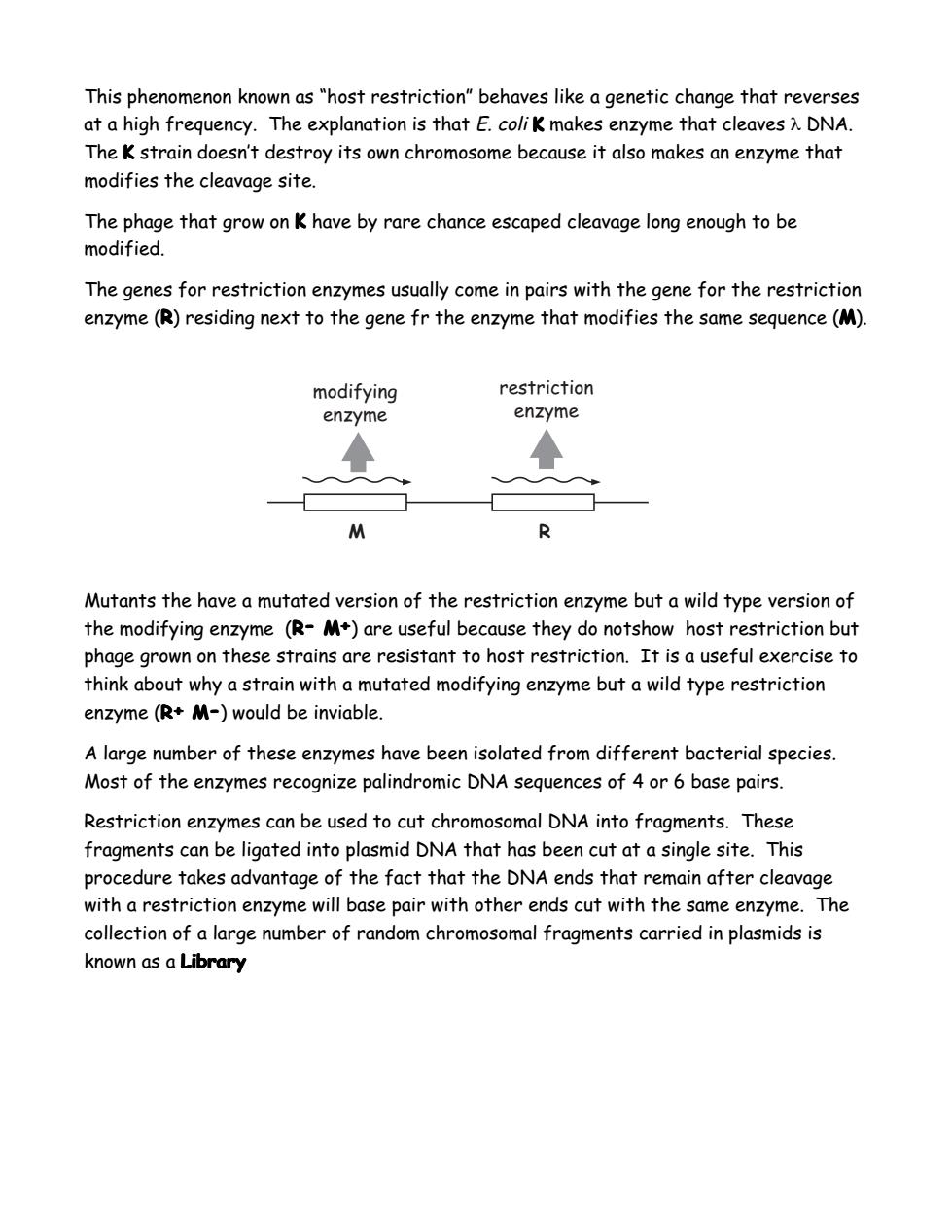正在加载图片...

This phenomenon known as "host restriction"behaves like a genetic change that reverses at a high frequency.The explanation is that E.coliK makes enzyme that cleaves DNA. The K strain doesn't destroy its own chromosome because it also makes an enzyme that modifies the cleavage site. The phage that grow on K have by rare chance escaped cleavage long enough to be modified. The genes for restriction enzymes usually come in pairs with the gene for the restriction enzyme (R)residing next to the gene fr the enzyme that modifies the same sequence (M). modifying restriction enzyme enzyme M R Mutants the have a mutated version of the restriction enzyme but a wild type version of the modifying enzyme (R-M+)are useful because they do notshow host restriction but phage grown on these strains are resistant to host restriction.It is a useful exercise to think about why a strain with a mutated modifying enzyme but a wild type restriction enzyme (R+M-)would be inviable. A large number of these enzymes have been isolated from different bacterial species. Most of the enzymes recognize palindromic DNA sequences of 4 or 6 base pairs. Restriction enzymes can be used to cut chromosomal DNA into fragments.These fragments can be ligated into plasmid DNA that has been cut at a single site.This procedure takes advantage of the fact that the DNA ends that remain after cleavage with a restriction enzyme will base pair with other ends cut with the same enzyme.The collection of a large number of random chromosomal fragments carried in plasmids is known as a LibraryThis phenomenon known as “host restriction” behaves like a genetic change that reverses at a high frequency. The explanation is that E. coli K makes enzyme that cleaves λ DNA. The K strain doesn’t destroy its own chromosome because it also makes an enzyme that modifies the cleavage site. The phage that grow on K have by rare chance escaped cleavage long enough to be modified. The genes for restriction enzymes usually come in pairs with the gene for the restriction enzyme (R) residing next to the gene fr the enzyme that modifies the same sequence (M). modifying restriction enzyme enzyme M R Mutants the have a mutated version of the restriction enzyme but a wild type version of the modifying enzyme (R- M+) are useful because they do notshow host restriction but phage grown on these strains are resistant to host restriction. It is a useful exercise to think about why a strain with a mutated modifying enzyme but a wild type restriction enzyme (R+ M-) would be inviable. A large number of these enzymes have been isolated from different bacterial species. Most of the enzymes recognize palindromic DNA sequences of 4 or 6 base pairs. Restriction enzymes can be used to cut chromosomal DNA into fragments. These fragments can be ligated into plasmid DNA that has been cut at a single site. This procedure takes advantage of the fact that the DNA ends that remain after cleavage with a restriction enzyme will base pair with other ends cut with the same enzyme. The collection of a large number of random chromosomal fragments carried in plasmids is known as a Library Library